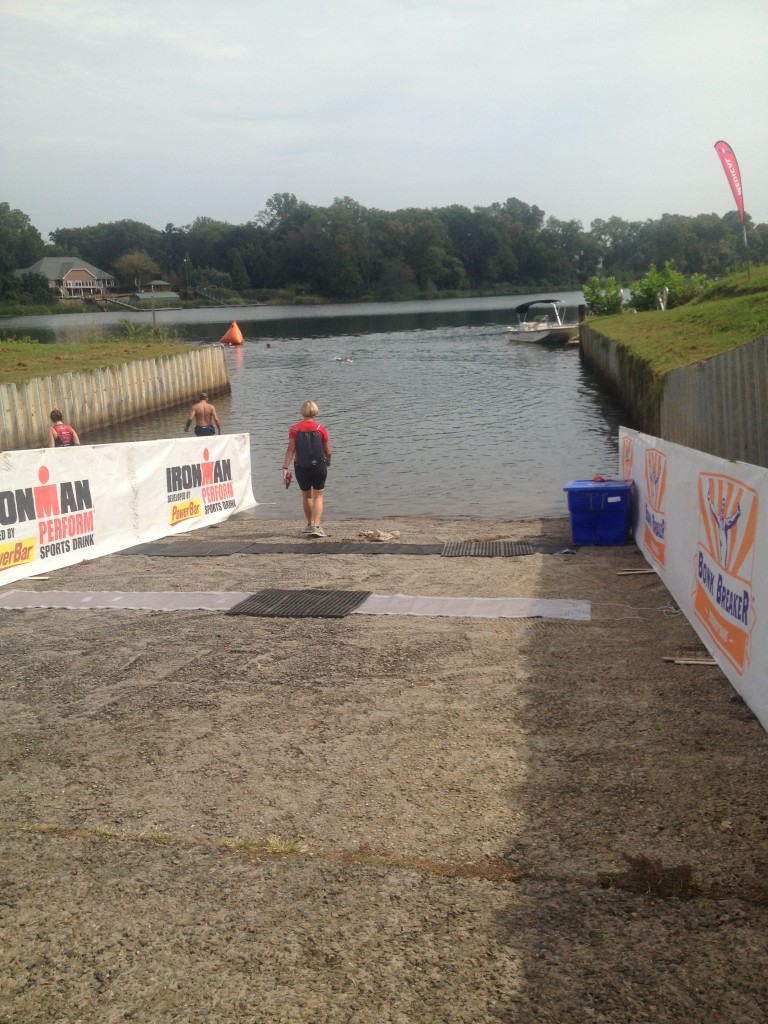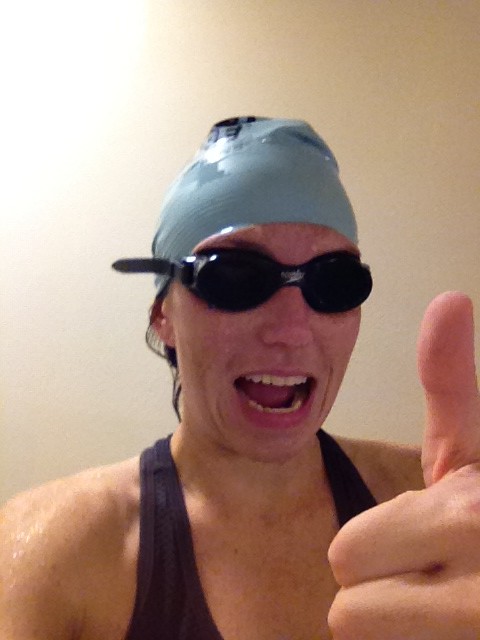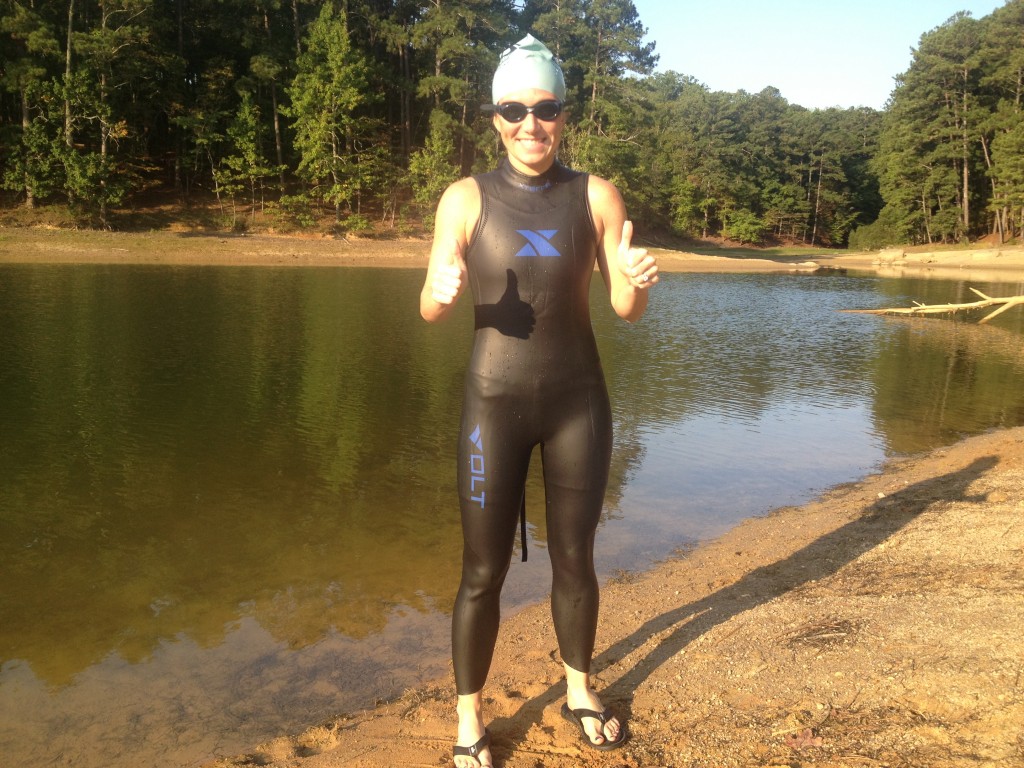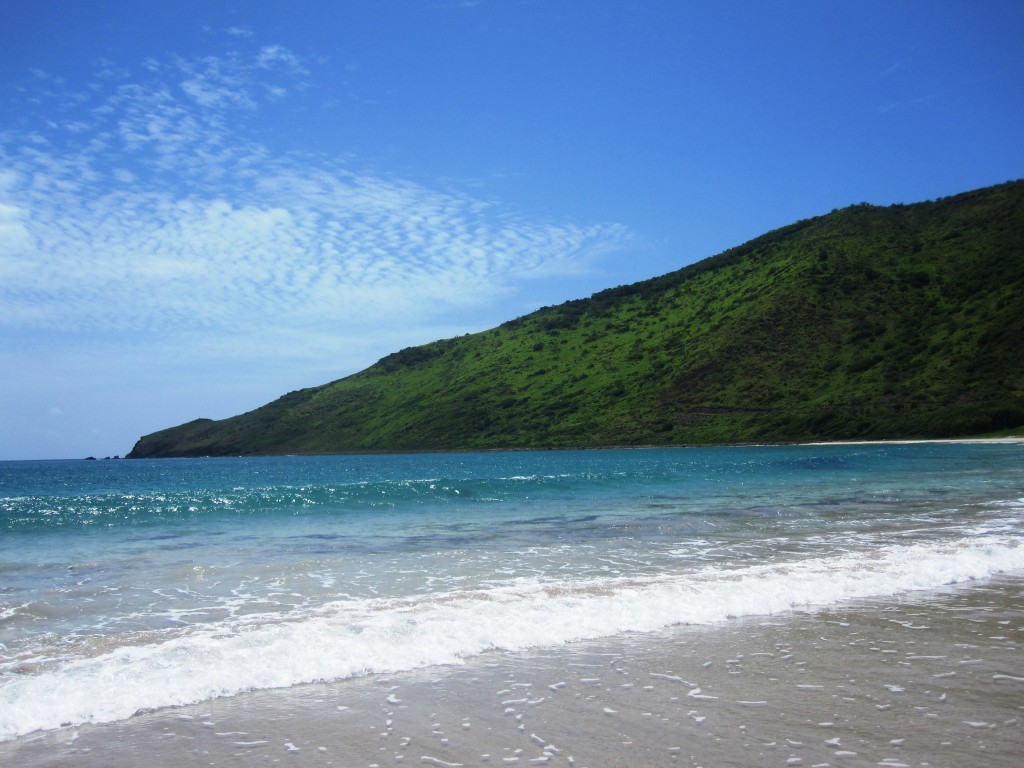Mastering Open Water Swims
For many people, including both new and seasoned triathletes, simply hearing the words “open water swim” makes them shudder.

What if a scary creature under the water gets me?
What if I get kicked and hit?
What if my goggles fall off?
Ahh! I can’t see anything.
I feel claustrophobic in a wetsuit!
These are just a few of the fears I’ve heard from people considering their first triathlon, as well as those who have completed many triathlons.
But it doesn’t have to be that way. You can feel like this about open water swims …

Several weeks ago, I attended an open water swim clinic. The coaches from Endurance Concepts who led the clinic provided some great tips that will help everyone feel more prepared and calmer as they take on open water swims. They were great reminders for me, and I hope they are helpful to all of you out there who are considering a triathlon or just looking to feel more confident during open water swims.
- Never swim alone in open water. EVER. Always have a partner(s), and when possible, ask a friend to ride alongside you in a kayak to be on the lookout for boats and to be ready to help you if you need to hold onto the boat or get out of the water quickly.
- Always wear a brightly colored cap so people and boaters can see you.
- Know the weather conditions and where the currents are before you start your swim. If the current is faster in one part of the lake, river or ocean, swim in that area to help your speed. If the wind is blowing the water in one direction, you may want to breathe in the opposite direction. Bilateral breathing (the ability to breathe on both sides) is a key to help you control these kinds of elements. If you currently only breathe on one side (I tend to only breathe on my right), it can feel funny at first to try breathing on your left. It takes practice to master bilateral breathing. The next time you’re at the pool, practice breathing from both sides during your warm-up or cool-down. At your next pool swim, try doing it a little longer. Eventually you will get it.
- When it comes to the creatures living under the water, try to remember that they are more scared of us than we are of them. Many of them are going to scurry away and stay hidden from a mass group of swimmers. I’m terrified of sharks, jellyfish and alligators, so I tend to stick with lake swims that are north of Florida.
- To be more comfortable swimming in open water, you have to … swim in open water. Practice swimming in a nearby lake or body of water with several training partners as part of your swim training. On race day, get in the water a little early if you are able, and swim a little to acclimate to the temperature and to calm your nerves.
- Wetsuits add buoyancy, making you higher in the water. Slower swimmers may improve their swim speed by up to 20 percent by wearing a wetsuit, while faster, more experienced swimmers will likely benefit 3 to 4 seconds per 100 yards.

- If the water temperature is cool enough to wear a wetsuit (typically temperatures colder than 78 degrees Fahrenheit), be sure it fits properly. Work with a local triathlon store to make sure you’re wearing the right suit in the right size. If your suit is too tight, especially if you are new to swimming in wetsuits or to open water swims, it can cause extra anxiety and fear.
- To get your wetsuit on easier, cover your body in Body Glide or Tri Glide. Put a plastic grocery bag on your feet to get the legs of your wetsuit on easier. Pull your wetsuit on from the inside so you don’t puncture or tear the suit. For a step-by-step guide for putting on a wetsuit, watch this helpful video:
- To warm up your muscles before a swim, do dynamic stretching, such as arm swings.
- Bring 2 pairs of goggles with you to a race or open water swim in case a strap breaks during your warm up.
- To help make sure your goggles don’t get knocked off during an open water swim, put the band underneath your swim cap. If the water temperature is cooler than 82 degrees, wear 2 swim caps and put the goggle straps between the 2 caps.
- If you have a lot of anxiety when it comes to open water swims, stay on the outside or start in the back during a race. You’ll be less likely to get hit or be in a tight crowd.
- Just like running when you know a race is going to get hard and you’ll have to keep pushing through mentally and physically, accept the fact that you are likely going to get hit or kicked in the water. You’ll feel a hand accidentally grab your foot or an elbow hit your arm. It is ok. You’re going to feel other bodies in the water until you can find your own personal space. Don’t be nervous about it.
- When you find yourself swimming close to others, swim behind them on the diagonal (like how geese fly in a “V” formation) to draft off of them and help increase your speed … don’t just swim directly behind them.
- The trick to sighting efficiently in the water is to remember to use “alligator eyes.” Only lift your head out of the water to eye level, trying not to lift your entire head out of the water (which I am totally guilty of doing). As you lift your eyes, kick harder, push your chest out and breathe as you turn your head. A good rule of thumb is to sight with your alligator eyes every 6 to 10 strokes for beginners and 15 to 20 strokes for more experienced swimmers.
- When it comes to sighting, find something to focus on that will help you swim as straight as possible. Don’t sight based on another swimmer/swim cap or kayak in front of you, as they are moving too and could be zigzagging. If you can’t see the next buoy, find a tree or edge of land that is in line with the buoy and keep focusing on that.
- If you begin to get scared or anxious in the water, visualize something happy that relaxes you. Some swimmers visualize a color and just focus on that to calm themselves down. My happy place is a beach I visited in St. Kitts several years ago. If I ever get anxious, that’s where I go in my head.

- After a swim in the open water, be sure to wash your goggles well if you use the same pair for both the pool and open water. It will help reduce allergens.
What other tips to have successful open water swims would you add to this list? If you participate in triathlons, how often do you swim in open water to practice?



Comments
What a great post. I linked to it from my post today (also on triathlon). That sounds like a great clinic! I love going to things like that!
So glad it was helpful, Katie! Thank you so much for linking to it on your blog! Happy training!
Excellent post! I really enjoy open water swimming so I’m forwarding this to my friends who don’t! The alligator eyes suggestion is great. I’ll be using that in my tri tomorrow. 😀
This post is very helpful but still so scary, I’d love to do a tri someday but I definitely need to work my way up to that.
I’ve “floated” around in open water at lakes in Ontario since I was a child… but the idea of actually swimming in it and racing in it is terrifying. Also, I generally don’t wear goggles so I don’t have to see the murky deep below me 🙂
Hopefully I can combat that while at the cottage the next few weeks!
Any tips just to be a stronger swimmer, Jes? I’d love to get your thoughts on training for the swim specifically. Ironically I’m not afraid of OWS, I’m just a weak swimmer. Pool or lake. Any tips or specific exercises to incorporate into the swim training would be appreciated! I know I need more work on my upper body.
I am not the strongest swimmer so probably not the best to get advice on swimming stronger 🙂 However, I would recommend swimming 3 days a week, and think about it like you would running: a speed day with intervals, a moderate day with some builds and a longer slower day to build endurance. Doing drills after your warmup is a good idea, and the swim workouts in Triathlete Magazine’s Week-By-Week Training Plan are helpful. That’s what I’m following. My best advice: swim more and take a lesson 🙂
Great tips! When I did my first OWS in preparation for my first tri, I had a panic attack. The water was very cold (I had a wetsuit) and when I put my face in the water it triggered a reflex that made me hold my breath instead of doing swim breathing. It threw everything off. I rested with a lifeguard kayak to calm my breathing down, then I continued. The morning of the tri, I made sure that I got in the water and paddled around to acclimate myself for a few minutes. It helped hugely!
[…] http://www.runladylike.com/2013/06/28/mastering-the-open-water-swims/ […]